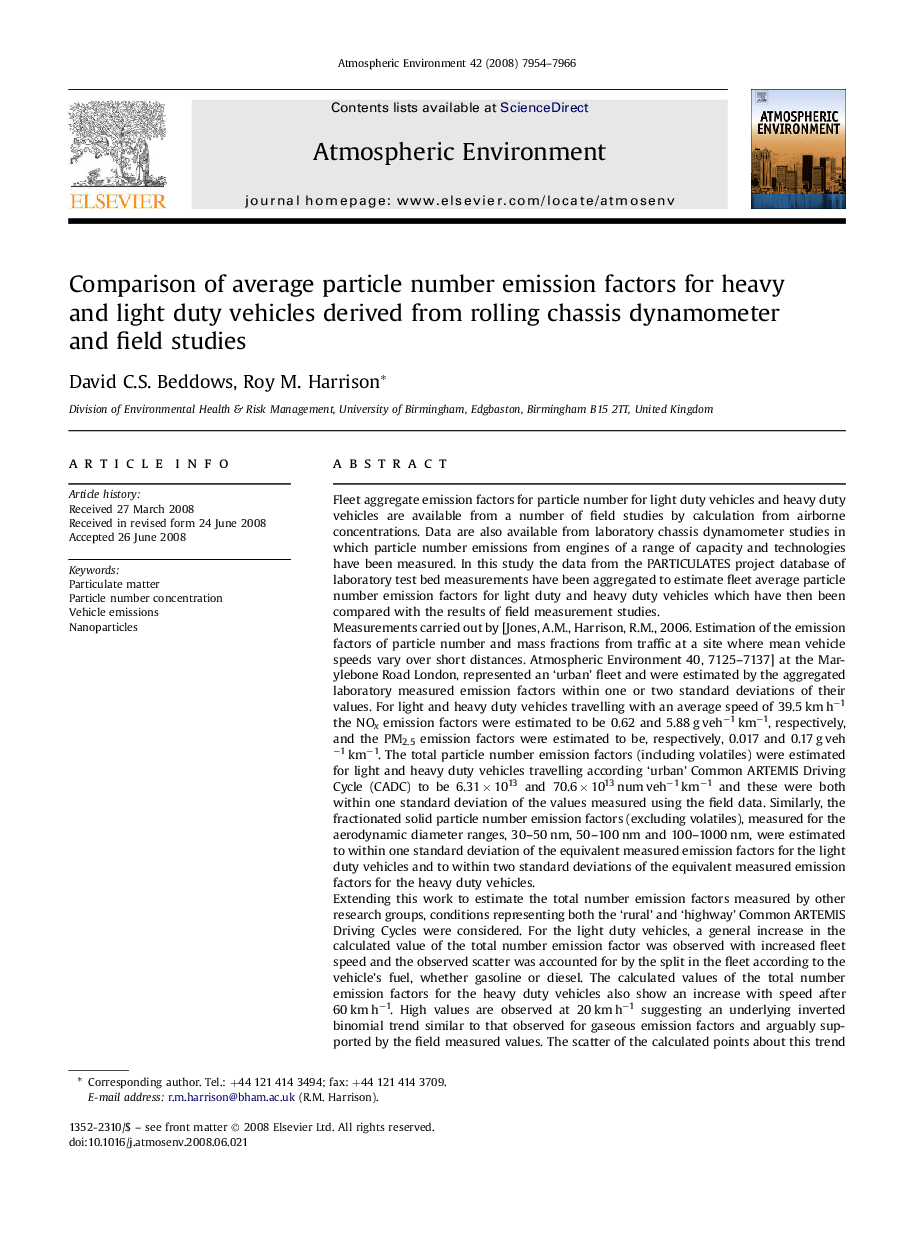| کد مقاله | کد نشریه | سال انتشار | مقاله انگلیسی | نسخه تمام متن |
|---|---|---|---|---|
| 4441504 | 1311110 | 2008 | 13 صفحه PDF | دانلود رایگان |

Fleet aggregate emission factors for particle number for light duty vehicles and heavy duty vehicles are available from a number of field studies by calculation from airborne concentrations. Data are also available from laboratory chassis dynamometer studies in which particle number emissions from engines of a range of capacity and technologies have been measured. In this study the data from the PARTICULATES project database of laboratory test bed measurements have been aggregated to estimate fleet average particle number emission factors for light duty and heavy duty vehicles which have then been compared with the results of field measurement studies.Measurements carried out by [Jones, A.M., Harrison, R.M., 2006. Estimation of the emission factors of particle number and mass fractions from traffic at a site where mean vehicle speeds vary over short distances. Atmospheric Environment 40, 7125–7137] at the Marylebone Road London, represented an ‘urban’ fleet and were estimated by the aggregated laboratory measured emission factors within one or two standard deviations of their values. For light and heavy duty vehicles travelling with an average speed of 39.5 km h−1 the NOx emission factors were estimated to be 0.62 and 5.88 g veh−1 km−1, respectively, and the PM2.5 emission factors were estimated to be, respectively, 0.017 and 0.17 g veh−1 km−1. The total particle number emission factors (including volatiles) were estimated for light and heavy duty vehicles travelling according ‘urban’ Common ARTEMIS Driving Cycle (CADC) to be 6.31 × 1013 and 70.6 × 1013 num veh−1 km−1 and these were both within one standard deviation of the values measured using the field data. Similarly, the fractionated solid particle number emission factors (excluding volatiles), measured for the aerodynamic diameter ranges, 30–50 nm, 50–100 nm and 100–1000 nm, were estimated to within one standard deviation of the equivalent measured emission factors for the light duty vehicles and to within two standard deviations of the equivalent measured emission factors for the heavy duty vehicles.Extending this work to estimate the total number emission factors measured by other research groups, conditions representing both the ‘rural’ and ‘highway’ Common ARTEMIS Driving Cycles were considered. For the light duty vehicles, a general increase in the calculated value of the total number emission factor was observed with increased fleet speed and the observed scatter was accounted for by the split in the fleet according to the vehicle's fuel, whether gasoline or diesel. The calculated values of the total number emission factors for the heavy duty vehicles also show an increase with speed after 60 km h−1. High values are observed at 20 km h−1 suggesting an underlying inverted binomial trend similar to that observed for gaseous emission factors and arguably supported by the field measured values. The scatter of the calculated points about this trend was accounted for by the distribution of the fleet across the vehicle weight and emission legislation categories.With the exception of three of the field research studies considered – where the measured emission factors were significantly underestimated by the aggregated laboratory emission factors – there was a general agreement in the order of magnitude between the calculated and field emission factors, but not to the high degree shown for the Marylebone Road data. Furthermore, dilution temperature, fuel sulphur content and tunnel deposition effects did not individually account for the observed discrepancies in this work and point to the need for correction factors derived from these parameters together with additional information such as dilution ratio in giving a more complete description.
Journal: Atmospheric Environment - Volume 42, Issue 34, November 2008, Pages 7954–7966